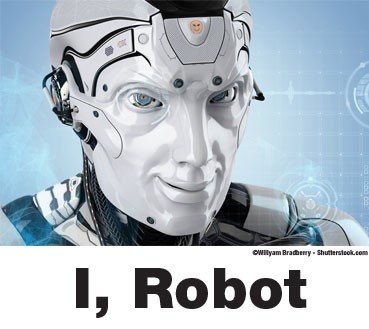Artificial Intelligence, Lawmakers And The Future Of Work
- by 7wData

When voters head to the polls this week, many will cast votes based on who they think will be better on critical economic issues like job creation. While much of the conversation has centered on jobs being shipped overseas or raising the minimum wage, another equally intense debate is going on outside the campaign bubble over the future of work itself. Specifically, will fast-advancing technologies like Artificial Intelligence create mass unemployment by replacing millions of people worldwide with robots and other automation? And if so, what can and should government be doing about it now?
There are definitely those who think that dire future is a possibility. A report issued by the World Economic Forum in January of this year said 7.1 million jobs globally could be lost to redundancy and automation, though those losses could be offset by the creation of about 2 million jobs related to the technology that replaced those workers in the first place. As bad as that sounds, some observers believe the job losses could actually be much worse. A 2013 study by researchers at Oxford University estimated that approximately 47 percent of all current U.S. jobs are in danger of being transitioned to automation and computerization. That is particularly scary given that a 2015 report from the U.S. Government Accounting Office says over 40 percent of the U.S. job force is already working on contingency: the self-employed, company or independent contract workers, part-timers, temp services and on-call employees.
In their book “The Second Machine Age,” MIT researchers Erik Brynjolfsson and Andrew McAfee say fears of such happenings have become ever more easily stoked for a simple reason: while evolving technologies have been forcing workplace evolutions for the duration of human history, none has been as rapid as this one.
“The computer processor doubles in power every 18 months, 10 times greater every five years, it’s a very different scale of advancement and it’s affecting a broader set of the economy than the steam engine did, in terms of all the cognitive tasks. It’s happening a lot faster and more pervasively than before,” they write. The result is a world where “science fiction keeps becoming reality.”
Examples abound. Robotics and other forms of automation are already in wide use in manufacturing, health care and many other industries. And this year the advent of the driverless car has pushed that boundary even further. A driverless taxi service began limited trial operation in Singapore in April, with a similar test fleet of autonomous taxis taking to the streets of Pittsburgh in August. Both services still require a human backup operator to be on board. Even so, far more driverless ride services are in the works, including from huge industrial players like Ford, Volvo, General Motors, Tesla, Google and Apple.
That possibility has professional drivers of all kinds concerned. It is a worry shared by Tesla CEO Elon Musk, who said at a forum in May that such technology could soon lead to “tremendous upheaval” in the workforce.
“If you have self-driving cars, then what happens to the 12 percent of the population whose job it is to drive a car or drive a truck?” he said.
Or, for that matter, any other industry where humans could possibly be replaced by a machine? And what role does government play in determining that answer?
To be sure, there are many who doubt such extremes will come to pass. Or who cheer them on, believing that having machines to take care of repetitive workday functions will allow humans to spend more time on creativity and projects that benefit them – and their employer - than they are spending now. In an op-ed in the Washington Post last February, University of Cincinnati economics professor Michael Jones posits the coming transition will be neither disaster nor blessing.
[Social9_Share class=”s9-widget-wrapper”]
Upcoming Events
Evolving Your Data Architecture for Trustworthy Generative AI
18 April 2024
5 PM CET – 6 PM CET
Read MoreShift Difficult Problems Left with Graph Analysis on Streaming Data
29 April 2024
12 PM ET – 1 PM ET
Read More



